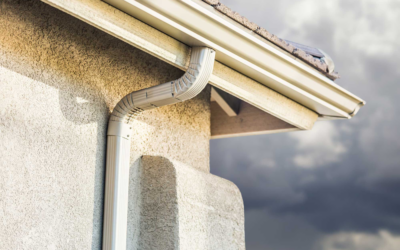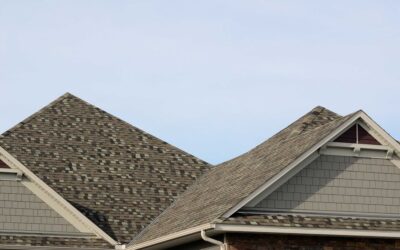As technology transforms the roofing industry, new materials and products are emerging at a rapid pace. Among these innovations, synthetic shingles have gained attention for their impressive blend of durability, aesthetic appeal, and environmental benefits. Homeowners and builders alike are increasingly drawn to synthetic roof materials for their versatility and long-term performance. But how are synthetic shingles created? And what types of synthetic roof materials are available today? In this blog, we’ll uncover the manufacturing process and explore the various types of synthetic shingles that can elevate your roofing system.
What Are Synthetic Shingles?
Synthetic shingles are engineered to replicate the look of traditional roofing materials such as slate, wood, or clay tiles, while offering enhanced performance. These shingles flaunt benefits that extend beyond mere appearance. Made from a mix of recycled plastics, rubber, and other synthetic components, synthetic shingles are designed to withstand the elements and deliver a visually appealing finish. They don’t just look good—they perform exceptionally well. Advanced production techniques allow synthetic shingles to closely mimic natural materials while boosting durability, UV resistance, and impact resistance. This makes them a popular choice for homeowners seeking both style and substance.
Exploring the Types of Synthetic Roof Materials
Before plunging into how synthetic shingles are made, let’s examine the various types of synthetic roof materials available. Each type brings its own set of advantages and unique characteristics:
- Polymer-Based Shingles: These shingles are primarily crafted from high-grade polymers like polyethylene or polypropylene. They are lightweight yet durable, and can be molded into a variety of shapes and textures to resemble materials such as slate, wood, or tile.
- Rubber-Based Shingles: Made from recycled rubber, often sourced from old tires, these shingles are flexible and resistant to cracking and splitting. Rubber-based shingles are ideal for areas that experience frequent hail or falling debris.
- Composite Shingles: Combining recycled plastics, rubber, and other synthetic materials, composite shingles offer a perfect mix of strength and flexibility. They are a favored choice for those seeking a balance of performance and aesthetic appeal.
- Fiberglass Reinforced Shingles: These shingles integrate a fiberglass mat with polymer-based materials. The addition of fiberglass enhances strength, making these shingles resistant to fire, UV rays, and weather-related damage.
Each type of synthetic roof material provides distinct benefits, allowing homeowners to select the option that best fits their needs, budget, and design preferences.
How Are Synthetic Shingles Made?
The creation of synthetic shingles involves several critical steps, from sourcing raw materials to molding and finishing. Here’s an overview of the manufacturing process:
1. Sourcing Raw Materials
The process begins with gathering raw materials. Manufacturers collect recycled plastics, rubber, and polymers, which form the basis of synthetic shingles. Many manufacturers prioritize sustainability by incorporating recycled materials, reducing the environmental footprint of production. For rubber-based shingles, used tires are repurposed. For polymer-based or composite shingles, recycled plastics from bottles, containers, and industrial waste are utilized to kick off the manufacturing process.
2. Shredding and Melting
Once the materials are collected, they are shredded into smaller pieces. These fragments are then melted down into a liquid form. High temperatures ensure that the materials are thoroughly liquefied and ready to be molded. During this stage, manufacturers may also add various additives such as UV inhibitors, fire retardants, and coloring agents. These additives enhance the shingles’ resistance to sun damage, fire, and weather, while also providing a diverse range of color options to suit different design needs.
3. Molding and Shaping
The liquefied material is poured into molds designed to shape the shingles. This is where synthetic shingles start to take their final form. Molds are carefully crafted to replicate the appearance of traditional roofing materials like slate, wood shake, or tile. For instance, molds for synthetic slate shingles will capture the characteristic clefts and contours of natural slate. Advanced technology ensures each shingle is consistent in shape, size, and texture. The goal is to create shingles that are virtually indistinguishable from natural materials while providing added benefits like durability and weather resistance.
4. Cooling and Solidifying
Once molded, the shingles are cooled to solidify the material. Cooling must be meticulously controlled to maintain the shape and structural integrity of the shingles. As the material hardens, it becomes more durable and ready to face the elements. Some manufacturers apply additional surface treatments during this stage to boost protection against moisture, UV rays, and algae growth. These treatments enhance the longevity of synthetic shingles, making them a reliable choice for your roofing needs.
5. Quality Control and Testing
No shingle leaves the factory without undergoing rigorous quality control testing. This involves subjecting the shingles to simulated weather conditions, impact tests, and fire resistance evaluations. Manufacturers also check for consistency in color, texture, and overall appearance. By the time the shingles are ready for distribution, you can trust that they have been meticulously crafted and tested to deliver top-tier protection for your home.
The Benefits of Synthetic Shingles
Understanding the manufacturing process helps highlight the many advantages of synthetic shingles. Here are some key benefits of choosing synthetic roof materials for your home:
- Durability: Synthetic shingles are engineered to withstand extreme weather conditions, including intense heat, cold, wind, and hail. They are less likely to crack, split, or warp compared to traditional materials, ensuring long-lasting protection for your home.
- Eco-Friendly: Many synthetic shingles are made from recycled materials, which helps reduce waste and minimizes environmental impact. Opting for synthetic roof materials allows you to contribute to sustainability efforts while enjoying a high-quality roof.
- Aesthetic Flexibility: Synthetic shingles come in a wide array of colors, textures, and styles. They enable homeowners to achieve the look of high-end materials like slate or wood shake at a fraction of the cost. Whether you prefer a rustic, modern, or traditional appearance, synthetic shingles can be tailored to meet your design goals.
- Low Maintenance: Synthetic shingles require less upkeep compared to natural materials. They resist issues like rot, mold, and insect damage, translating into fewer repairs and lower long-term costs for homeowners.
- Cost-Effective: Synthetic shingles offer excellent value for money. They deliver the visual appeal of more expensive materials without the hefty price tag. Their durability and low maintenance needs make them a smart investment over time.
Force Roofing Systems is Your Go-To for Synthetic Shingles
Synthetic shingles represent a modern roofing solution that blends the beauty of traditional materials with the enhanced performance of synthetic roof materials. From the careful sourcing of raw materials to the precise molding process, every step in manufacturing synthetic shingles is designed to produce a product that looks beautiful and performs exceptionally well. Whether you choose polymer-based shingles, rubber-based shingles, or composite shingles, synthetic roof materials offer a versatile and cost-effective solution for any homeowner.
At Force Roofing Systems, we specialize in providing high-quality synthetic shingles tailored to your unique needs. If you’re considering synthetic roof materials for your next project, contact us today to schedule a free consultation. We’ll guide you through your options and help you select the perfect roofing solution for your home.



